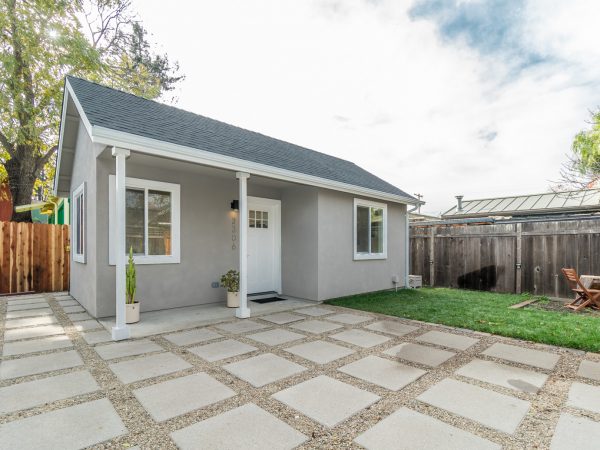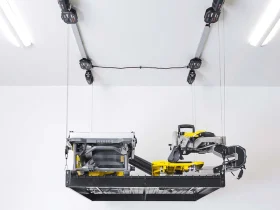You may have considered building a second house on your property if you reside in California. ADUs, sometimes known as “granny flats” or “accessory dwelling units,” are tiny residences that can be used for a variety of purposes, including a home office, a rental apartment, or a guest house. Even though there are restrictions on where and how ADUs may be built in California, the procedure is rather simple, and it might be a terrific way to increase the value of your property.
What Exactly Are ADUs?
ADUs are modest additional dwellings that are frequently connected to or on the same property as a single-family home. These one-of-a-kind spaces can be utilized for a variety of purposes, including guesthouses, rental apartments, or additional living space for a family.
The number of ADUs in California may have increased in recent years for a variety of reasons. One reason for this is that these buildings are typically affordable and give a simple method to add extra living space to a home without breaking the bank or requiring much construction. ADUs have also been found to benefit both homeowners and the communities surrounding them. They can, for example, increase the value of a property and bring in money while causing little disruption to the neighbors. This area is adaptable and may be utilized for a variety of purposes, including:
- A studio for recording
- A creative space
- An at-home office
- A gym
- The Library
- A flat for rent
- And plenty more!
ADUs are a terrific option for many California property owners, and their popularity is projected to expand in the future years.
More Applications for Your ADU in California
Building an ADU on your property has several advantages, including additional room, more independence, and a better market value.
One of the primary advantages of having an ADU on your property is that it provides you with extra living space. If you live with little children or elderly relatives, for example, each individual may have their own space and privacy while still contributing to the overall care of the household. An ADU can also function as a home office, studio, or workshop. This allows you to earn more money or hunt for better career prospects.
Having an ADU on your California property is very beneficial since it provides extra space for you, your family, and/or your visitors. An additional housing unit can be rented out to short-term visitors such as family and friends traveling through town. This might help you earn some additional cash. On the other hand, for adult children who want to be more independent but still require a place to live, it can be a long-term solution. This may also increase the value of your home if you decide to sell it. There are several advantages to constructing an ADU on your property, whether you want to utilize it immediately or later.
How Do You Begin Construction on an Accessory Dwelling Unit on Your California Property?
There is no single response since the procedure for obtaining approval to build an ADU in California is unique to each property and scenario. But here’s a basic rundown of how it works.
Before you may build an ADU on your property in California, you must first complete a number of standards. First, determine whether your land is suitable for an ADU. This is usually determined by the size, location, and zoning laws of your property. The local building department or design review committee must then grant you authorization. Typically, this entails submitting blueprints and documentation outlining what you want to create and how it will appear, as well as meeting with others in the region to discuss and assess your ideas.
Once you have obtained all of the necessary rights and approvals, you may begin construction on your ADU. Typically, this entails assembling a team of contractors and building professionals. When your new ADU is completed, you must register it with the city or county in which it is located. Obtaining approval to begin ADU construction on your California property can be a lengthy and difficult process, but it is doable if you prepare ahead of time and work hard.
How Much Does It Cost to Construct an ADU?
When purchasing a home in California, one of the first things to consider is whether or not there is enough room on the land to build an auxiliary housing unit (ADU). There are numerous prices and considerations to consider when creating an ADU, whether you intend to live in it or rent it out to generate money.
The majority of the money spent creating an ADU is spent on supplies, renting or purchasing equipment, permits, labor, and taxes. These costs may easily add up depending on the size and complexity of your project. You may have to pay extra for services such as water and electricity after the ADU is completed. Also, if your ADU is not your primary residence and you rent it out, you may be required to pay a higher insurance cost.
Before beginning an ADU construction project, consider local zoning restrictions, municipal or county building codes, local authority inspections, construction permits or licenses necessary by local governments, and any other special permissions or licenses required for construction work. Depending on where you reside and what you want to do with your land, obtaining clearance for an ADU may require a significant amount of paperwork. Acton ADU’s expertise can alleviate a lot of concerns and queries.
The Acton ADU Strategy
Acton ADU’s technique is one of the greatest you can employ. Their crew is up to date on all local and county rules, so you can be confident that your project will be authorized. They have also built a variety of ADUs, so you can be confident that the task will be done correctly and on schedule. Their crew has worked in the sector for over 30 years and can guide you through the intricate process of constructing an ADU. Visit www.actonadu.com to learn more about how they can assist you.









